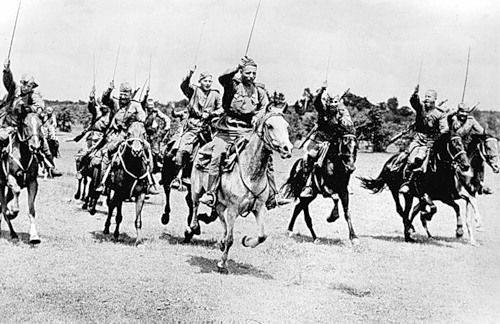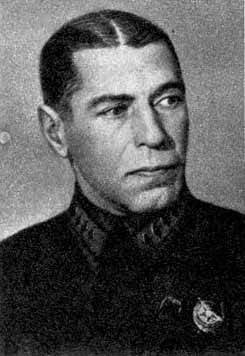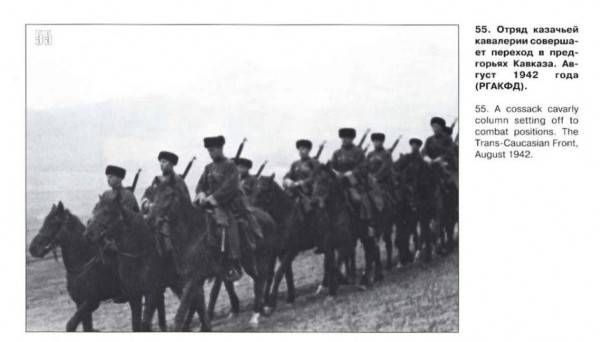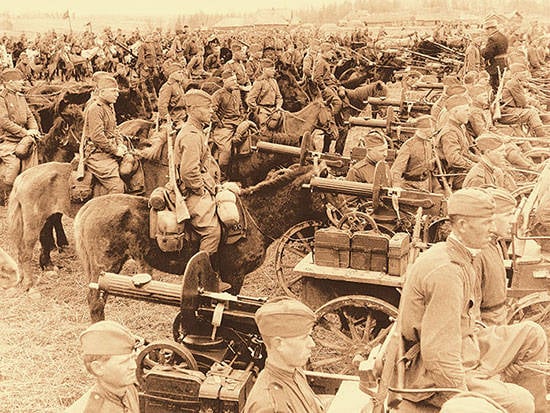Cavalry myths
But the view that the role of cavalry in the Red Army is reevaluated is not true. Before the war, the number of cavalry constantly fell. According to the report of the People's Commissar of Defense in the Central Committee of the CPSU (b) in the autumn of 1937, in the long-term development plan of the Workers 'and Peasants' Red Army for 1938-1942, it was said about the reduction and disbandment of a significant part of cavalry. As a result, by the beginning of World War II, the 1938 cavalry divisions in 32 and the 7 control of the corps left 4 in the control of the corps and 13 divisions. Some cavalry units were reorganized into mechanized ones; thus, the 4 th cavalcourse, the command and the 34 th cavalry division became the basis of the 8 th mechanized corps, DI Ryabtsev (before that, the commander of the cavalry corps).

Theory of military use of cavalry in the USSR
The theory of the combat use of cavalry in the USSR was created by quite sound people; So, in 1922, the work “Cavalry: Cavalry Essays” was published, which belonged to Boris Mikhailovich Shaposhnikov — a colonel, cavalryman of the tsarist army, headed the General Staff in the USSR. He released the first study on the tactics of cavalry in the Union, which caused a wide discussion of the red commanders. In his work, Shaposhnikov reduced equestrian combat to exceptions, and combined combat should become the norm - horse maneuvers, and the actual battle on foot. The organization was to become closer to the infantry, the armaments were strengthened, becoming similar to the infantry - rifles with a bayonet, revolvers, grenades, carbines, the number of machine guns was increased, the artillery units were strengthened (cavalry should have howitzers and anti-aircraft guns), armored vehicles were given, including Tanks. The cavalry was supposed to support from the air aviation.
Marshal Budyonny was not a “narrow-minded” cavalryman, but quite reasonably argued that the role of cavalry is increasing in the case of a war of maneuver, this is its field of application. That is why in the Red Army it was necessary to keep the powerful cavalry.
The cavalry combat regulations attributed an offensive in equestrian ranks only in the event of a “favorable situation,” that is, if there is a shelter from enemy fire, it is weak or there is no enemy fire. The horse actually became a vehicle, while cavalrymen fought on foot.
Field Charter 1939 of the year noted that the cavities must be used in conjunction with tank units, motorized infantry, aviation; in the development of breakthroughs, in raids on the enemy’s rear, in the pursuit of the enemy. The cavalrymen, having dismounted, could hold the terrain, but were attributed at the first opportunity to replace them, saving for maneuver.

Shaposhnikov, Boris Mikhailovich.
Cavalry combat use
Horses were used for movement, horse breeders were leading them away (several people in each squadron), cavalrymen fought like regular infantry. Attacking the position of the enemy in the equestrian system, with increased fire weapons, became suicide, moreover, meaningless, our commanders did not suffer such foolishness. The famous cart also remained, but before the battle the machine gun was removed, the horses were taken away with the cart. Horse attack and felling of the enemy with the sword was the exception. Many fighters never went into a horse attack during the war and did not kill anyone.
In fact, the cavalry units became a kind of mechanized infantry, only on horseback. This also had its advantages, the cavalry passed there where armored vehicles could not get through, vehicles - in forests, mountainous terrain. Soviet cavalrymen, with their swords attacking Wehrmacht positions - this is a myth.


Horse guards General Oslikovsky at the show, 1944 g.
The myth of the Polish cavalry attacking Wehrmacht tanks
The myth was created by Guderian in her memoirs: “The Polish Pomeranian cavalry brigade, because of ignorance of the constructive data and methods of actions of our tankmen, attacked them with cold weapons and suffered terrible losses. " Apparently, this plot went well with the idea of the racial superiority of the “Nordic race” over the Slavic “subhumans”, who had the intelligence in the equestrian ranks to attack the tanks.
His message was then creatively developed in fiction, Pikul, for example, in his book "The Square of Fallen Fighters".
In reality, the Polish cavalry, like the Soviet, had instructions that the cavalry made marches in the equestrian ranks, and the battle leads on foot. Naturally, there could be an exception if you are pursuing a demoralized enemy or taking him by surprise.
The 18 th Pomeranian Lancers Regiment participated in the battle of Kroyantami. He 22 August 1939 received a mobilization order, 25-th it was completed. The regiment consisted of more than 800 people, two 37-mm anti-tank guns, 12 PTR, 12 heavy machine guns, 18 light machine guns, 2 motorcycle, 2 radio stations. Then it was reinforced with a battery with 4-me 75-mm guns and two heavy machine guns.
On September 1, the regiment met the enemy at the border and spent the first half of the day in a defensive battle, in the second half of the day the regiment received an order to launch a counterstrike and, taking advantage of the enemy’s hitch, move away. Two squadrons and two platoons were assigned to the counterstrike, they were brought into a maneuverable detachment, he was assigned the task to go to the rear of the German infantry by seven in the evening and attack it, and then retreat beyond the front line.
During the roundabout reconnaissance, the Poles discovered a battalion of German infantry, which stood on a halt in 300-400 meters from the edge of the forest. Polish commanders decided to attack in the equestrian ranks, using the effect of surprise. The attack was led by the commander of the regiment, Colonel Mastalezh, at the signal of the pipe the Poles attacked. The Germans did not expect a strike and were taken by surprise, and ran, the Poles began to chop them down. But the Poles did not notice the armored vehicles hidden in the forest; now they were taken by surprise. They left the forest and opened fire with machine guns (i.e. there were no tanks), one gun supported them, the Poles were defeated. They retreated, losing killed 26 people, including the colonel, and about 50 people wounded.
Most of the losses 18 th regiment 1 September suffered in a defensive battle - up to 60% of the composition, two anti-tank guns, a few machine guns. The image, invented by Guderian and developed by other authors, has nothing to do with reality. The 18-th Pomeranian Ulan regiment (or rather, part of it) attacked the German infantry, not the tanks, and was attacked by German armored vehicles when it was hacking down the Germans. But, having suffered losses, the cavalry retreated and was not completely destroyed.
Sources of:
Guderian G. Memoirs of a Soldier. Smolensk, 1999.
Isaev A.V. Antisuvorov. Ten myths of the Second World War. M., 2004.
Soviet cavalry. Military - ist. essay / A. Ya. Soshnikov, P. N. Dmitriev, A. S. Arutyunov, et al. M., 1984.
Tyulenev I. V. Soviet cavalry in battles for the Motherland. M., 1957.
Information